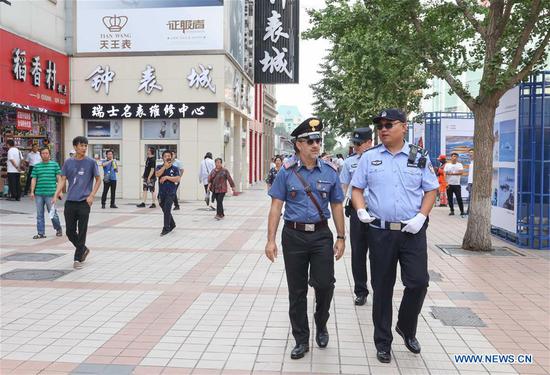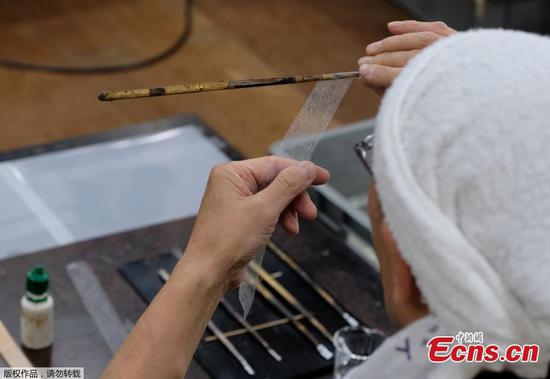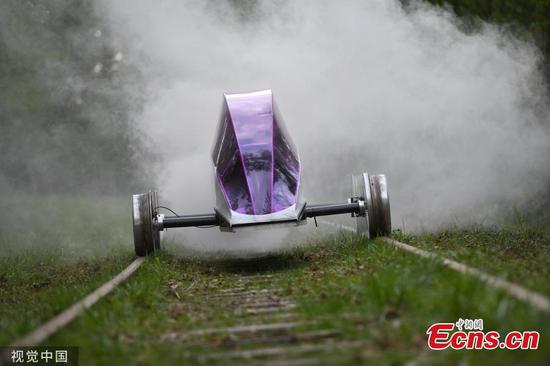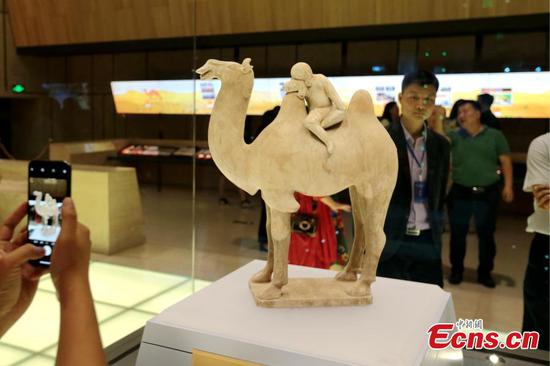
Surgeons at the People's Hospital in Shitai county, Anhui province, conduct an operation with the help of their counterparts at the Second Hospital of Anhui Medical University via a 5G-assisted medical-services platform. (XU MINHAO/FOR CHINA DAILY)
Recent upgrades mean doctors can treat patients hundreds of kilometers away.
Heart surgeon Guo Hui-ming has a prescription for what ails China's medical services: fifth-generation, or 5G, technology.
Guo works at Guangdong Provincial People's Hospital, a leading medical center in Guangzhou, capital of Guangdong province.
The facility is pioneering the use of 5G-assisted medical services that enable its specialists to help with delicate operations being performed hundreds of kilometers away.
About 80 percent of China's medical resources are concentrated in large cities, such as Beijing and Shanghai, and 80 percent of those resources are in big public hospitals, where patients flood in to see eminent physicians. That can lead to overcrowding and sometimes strains doctor-patient relations.
Guo believes telemedicine via superfast wireless technology will help tackle the problem by allowing more patients to receive high-quality treatment at clinics near their homes.
Remote guidance
Guo, 54, is a tech fan. He wears an Apple Watch and speaks Cantonese to Siri on his iPhone.
Two months ago, he made headlines by using 5G technology via a live video stream to direct minimally invasive heart surgery on a patient 400 km away.
During the four-hour operation, Guo, head of his hospital's cardiac surgery unit, sat in front of a big screen and gave instructions using a microphone and a 3D model of the patient's heart. However, he wore a suit and tie, not traditional surgeon's garb.
Guo said only four doctors in his team are capable of such surgery, but last year, the team performed more than 700 minimally invasive heart operations.
This sort of surgery is difficult, but demand is growing. Instead of a large incision, the operation is performed through tiny cuts in the patient's chest. Moreover, the surgeons don't saw through the breastbone, but operate between the ribs, which results in less pain and a faster recovery.
Before, Guo had to drive several hours to remote county hospitals to conduct operations, as well as seeing patients in Guangzhou.
"About 70 percent of my patients are from outside Guangzhou," he said.
Yu Xueqing, president of the hospital, likened its outpatients' hall to a crowded supermarket, because thousands of people pour in every day.
He said the congestion reduces patient satisfaction and increases the risk of infectious diseases, such as dengue fever. That's a major concern, because Guangdong experienced a serious outbreak of the rapidly spreading mosquito-borne illness five years ago.
For patients from distant rural areas, traveling while ill can be challenging and time-consuming. "Some died en route, unfortunately," Yu said.
In the recent past, telemedicine was mainly conducted via phone or video. It was not common, mainly because the poor technology led to unstable signals, slow transfer speeds and low definition, which made it impossible for doctors to oversee procedures remotely.
"Before 5G, we dared not conduct remote surgery," Yu said. "Even a time lag of just a few seconds between the devices and the surgeons could result in critical mistakes."


















































